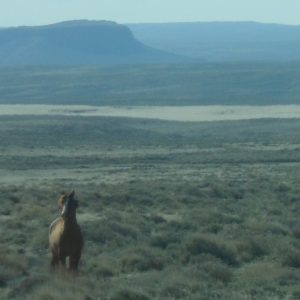In addition to my botany work at the Bureau of Land Management, this month I had the opportunity to participate in a study conducted by another federal agency, the USGS. The study aims to determine the effects of various vegetation treatments on sage grouse habitat, and to identify any benefits of different treatments for sage grouse. During my two weeks camping in the field, I acquired valuable experience conducting vegetation point transect surveys as well as subplot vegetation sampling to determine species composition, cover and abundance. My time with the USGS has been great for many reasons. Working with a knowledgeable and experienced field crew has increased my field skills, I learned more about the flora of the region, and I met great people!
Author Archives: MKD623
Wyoming Landscapes
Two months have passed since I drove through a blizzard to arrive in the harsh, seemingly inhospitable environment of southwestern Wyoming’s High Desert District. In that time, I have witnessed a transformation of the uniformly frozen landscape into distinctive vegetation zones with flourishing wildflower populations.
After spending time identifying and monitoring sage grouse leks through the early spring, I am now focusing on scouting for populations of blooming forbs, grasses and shrubs that have significant restoration value for my field office. The seed collections made from these and other populations for the Seeds Of Success Program will promote the incorporation of native, ecologically beneficial species into restoration and rehabilitation projects. Witnessing the biological and geological diversity within this 3.5 million acre field office has been humbling, hiking and driving from mountaintops into deep canyons.
While I initially applied to the CLM internship because it provided an opportunity to contribute to conservation efforts, my experience has already strengthened my desire to pursue conservation beyond this internship and into the future. I’m looking forward to the rest of the field season!




